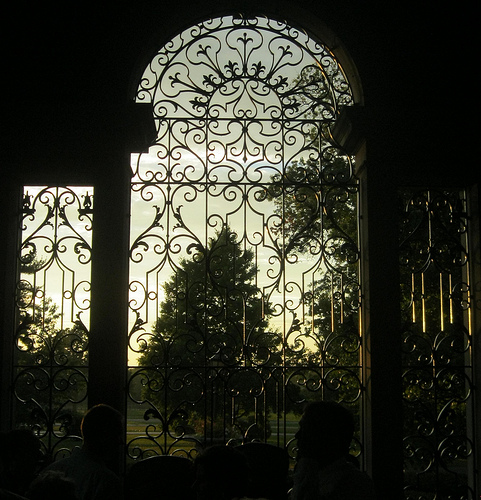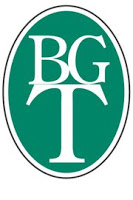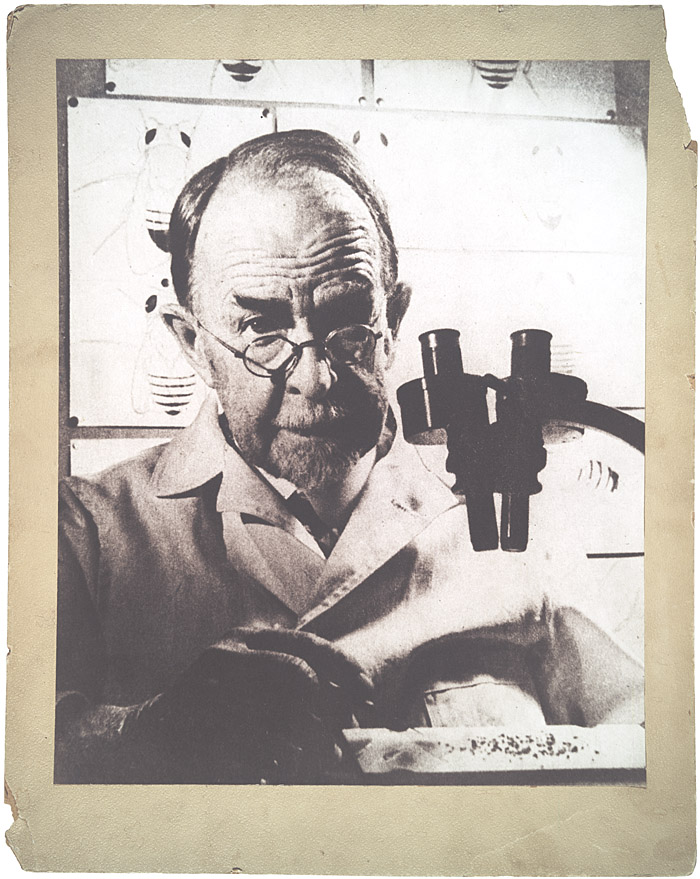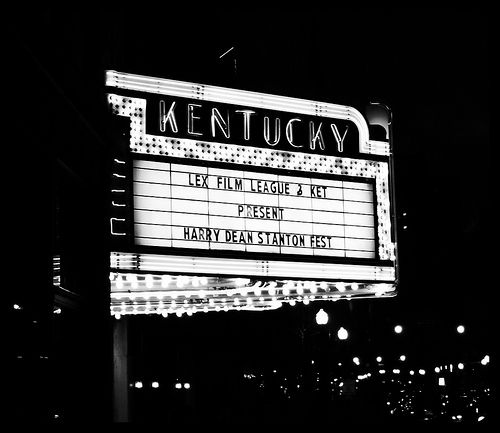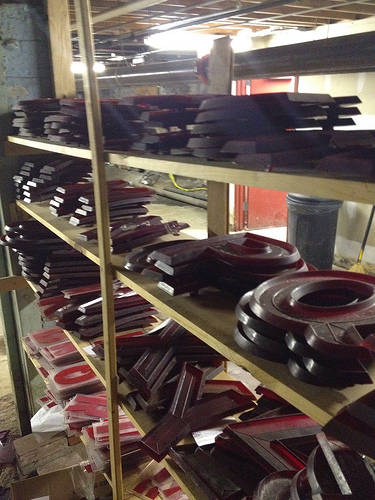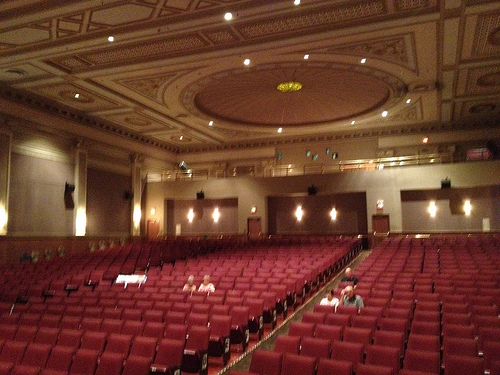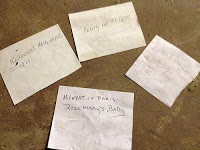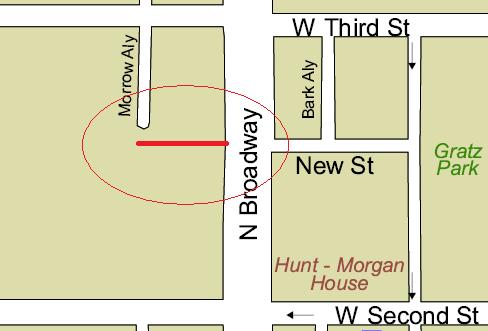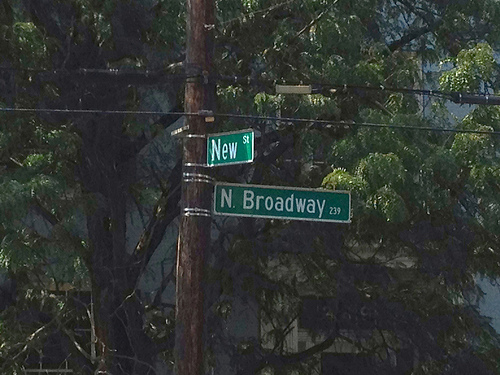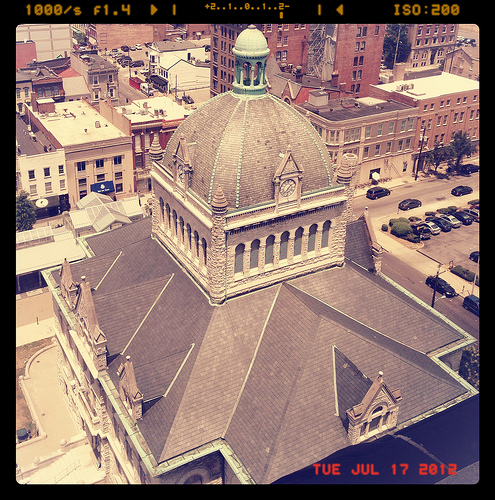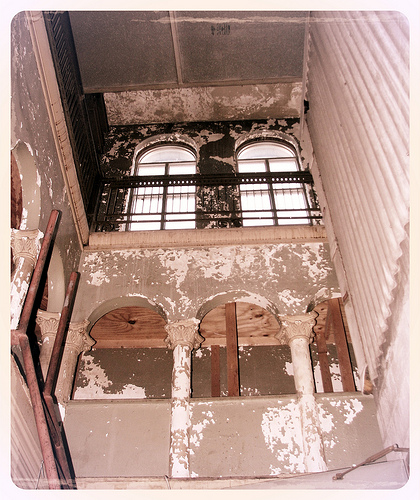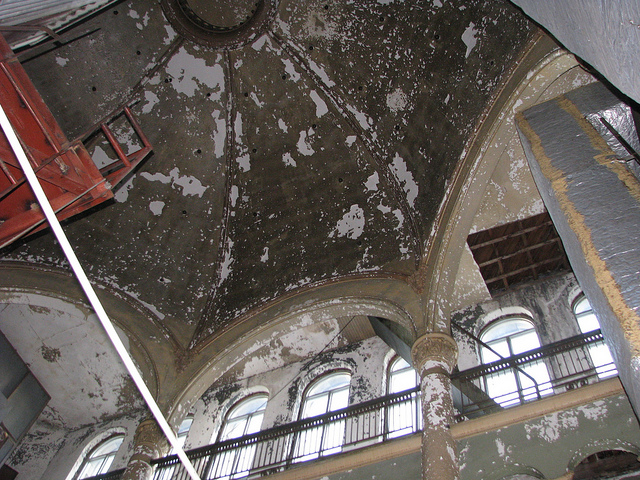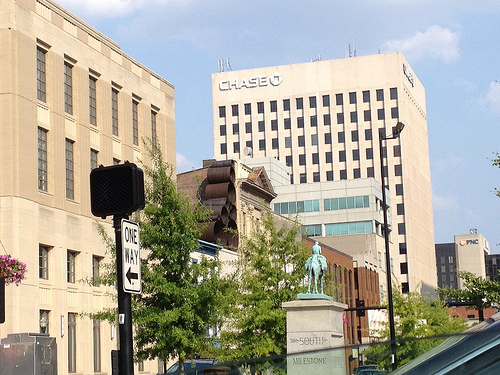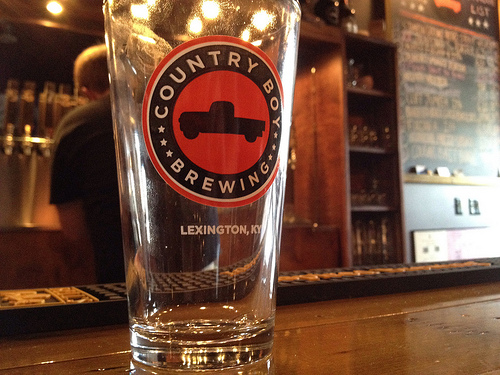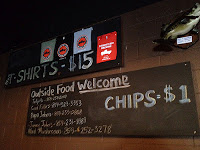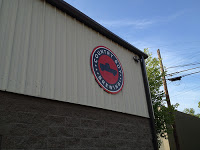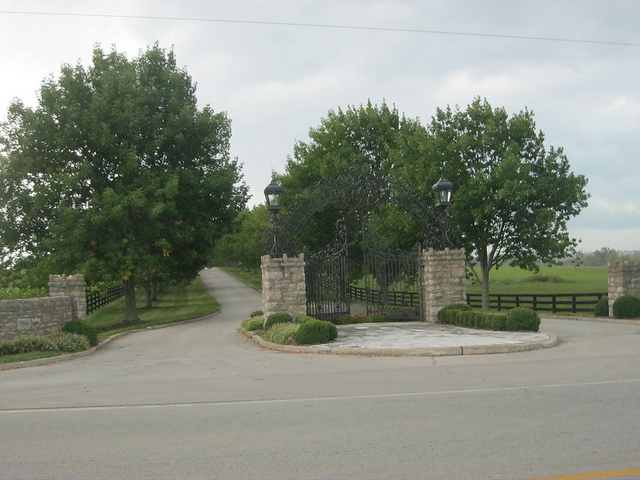 |
| Entrance to Spindletop Hall – Lexington, Ky. |
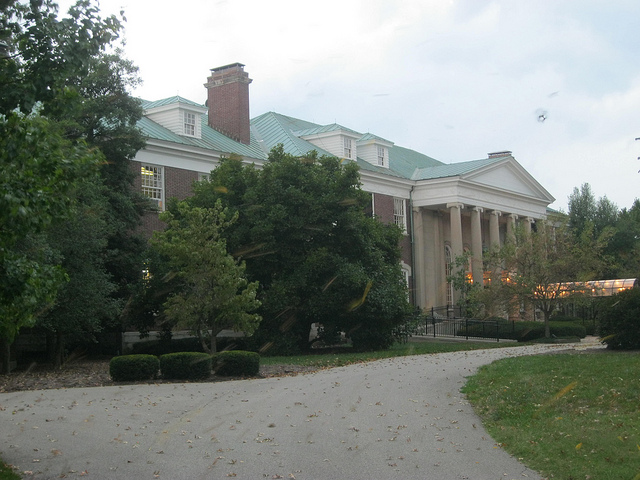 |
| Spindletop Hall – Lexington, Ky. |
A forty room mansion in the Georgian Revival style located on Lexington’s Ironworks Pike was constructed in 1935-1937 for Ms. Pansy Yount. The mansion, at 45,000 square foot, stands at the end of a quarter-mile long, tree lined private drive. When one considers the massiveness of this home – along with its numerous outbuildings including a garage, pool house, stables, aviaries, and kennels – the constructions costs of a mere $1 million seem quaint. Today, the PVA has assessed the value of the 1,066 acre property at $20 million which is far short of its actual value.
The 17-bay mansion itself consists of a rectangular 9-bay plan with two receding flanking wings to create the balance of the structure with most of the structure in Flemish bond laid red brick. The original copper roof remains. Dominating Spindletop are the six Ionic limestone columns on the temple portico behind which a limestone block facade contrasts with the dominant red brick.
There are wrought iron features throughout Spindletop, but none quite as spectacular as as the Palladian window on the northwestern elevation of the porte-cochere. There, the setting sun creates a canvas which brightly displays the detailed iron work.
And although the porte-cochere would have been a primary entrance to the home, the entrance hall is not want of beauty. The double doors through which you enter cost $14,000 for the pair at the time of their installation and are made of bronze. Also of bronze is the three part chandelier hanging overhead from the molded plaster ceiling. The hall is flanked by a pair of winding stairs, though the centerpiece is a large white mantel which had been extracted from Wornersh Park in Surrey, England.
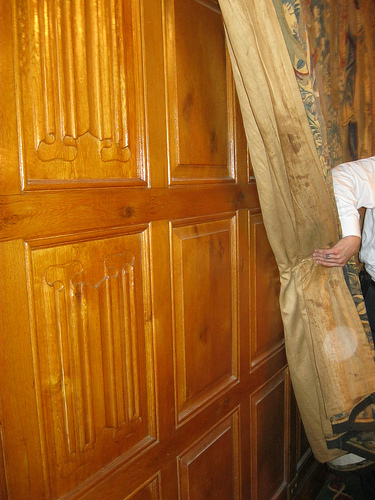 |
| Elizabethan Living Room – Spindletop Hall |
Three main rooms off the Great Hall: the Georgian Dining Room, the Elizabethan Living Room, and the William & Mary Music Room. The dining room features a carrara marble mantel built for Shapwick Hall in Somerset, England, ca. 1750. The colossal living room – 30′ x 60′ – has oak paneled walls and a beautiful wooden mantle carved with the phrase “East, West, Home’s Best.” This Flemish phrase complements the 16th century tapestry hanging on one wall (hiding those panels which are not carved). The music room contains a ca. 1735 mantle from London, wainscoted mahogany walls, a fare violin collection, and a Kimball reproducing organ. The organ can be played in the music room or remotely controlled from six locations throughout the house. One hundred rolls of music were specially recorded for the Yount organ and are contained next to the instrument in a Chinese lacquered cabinet. The organ pipes are largely contained underneath the Grand Hall, though nearly a mile of organ pipe is contained within the mansion.
A few steps down from either the music or the living room is the Gothic Library. There one will find oak paneling, faux hammer beam ceilings, and a gray stone English Tudor mantle removed from Trentham Hall in Staffordshire, England. The texts on the shelves have been gifted to Spindletop; Mrs. Yount removed her 7,000 volumes with her to Texas. Also gone is the original oriental Persian rug which reportedly cost $40,000 in the 1930s. The porte-cochere enters into the library, which has long been my favorite room in the mansion.
Upstairs, two palatial bedroom suites offered respite for Mrs. Yount and her daughter, Mildred. Mrs. Yount’s suite is decorated in the French style while Mildred’s is in that of 18th century England. Each suite consists of four rooms. Off Mrs. Yount’s bathroom is a safe which is alleged to have contained a necklace once belonging to Marie Antoinette.
Given the infamous Lindbergh kidnapping, Mrs. Yount was concerned that her Mildred – the richest little girl in America – would also be kidnapped. It is believed that under the house, there is a tunnel to safety. Mysteries and great beauty about at Spindletop Hall. More can be found on flickr.
Yount lived at Spindletop until she relocated in Texas in 1955. In 1959, the University of Kentucky purchased the property for a discounted $850,000 as Yount viewed the transaction as a gift to UK.
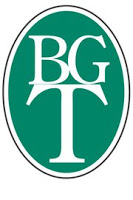
The Bluegrass Trust for Historic Preservation hosts a monthly deTour for young professionals (and the young-at-heart); Spindletop was our deTour in Sept. 2012. The group meets on the first Wednesday of each month. Our February gathering will be at the Oldham House on South Limestone Street. Join us there at 6:30 p.m.; learn more details on Facebook! You can see Kaintuckeean write-ups on previous deTours by clicking here.

